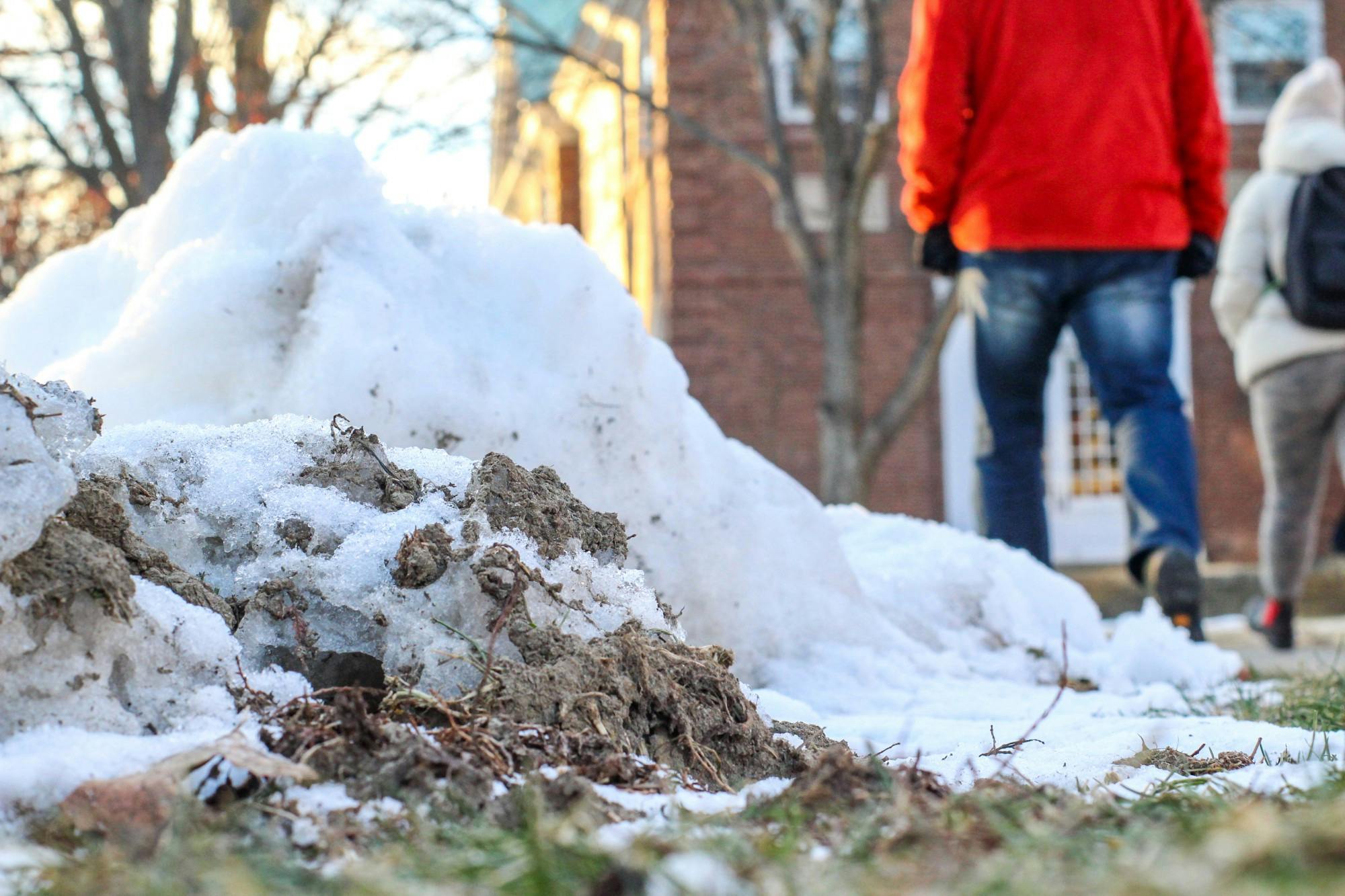Like many students at Dartmouth, I look forward to going home for the holidays over winterim. My ideal holiday season is almost formulaic:
- Trade college stories with my best friend at our favorite coffee shop (dropping first and last names, of course)
- Hear the same old anecdotes during Thanksgiving dinner from tipsy relatives
- Watch a festive movie on the couch, the Christmas tree twinkling in the background
- And finally, wake up on Christmas morning to the sight of fresh, fluffy snow.
Except, the last step didn’t happen this year in Connecticut. And as I looked through my window, I couldn’t help but think about the last time I saw snow on Christmas morning— or even anywhere near it. If there was precipitation at all, it was rain. I was shocked to come home to consistent temperatures in the high 40s and even mid 50s— especially after growing accustomed to the slight chill of Hanover.
Obviously, we’ve seen the effects of climate change for decades, if not longer. Since 1930, snowfall in the United States has decreased about 0.19% per year. Global temperatures have risen by about 0.07°C per decade since 1880. As of 1981, the rate of average changes in temperature has only increased, as documented by graphics published by scientist Neil R. Kaye. Why the sudden feeling of dread surrounding climate change?
It could be naivete. I was younger when it used to snow during the holiday season. Any changes to the typical weather in the following years went unnoticed by me. Now that I’m older, I’m more aware of the greater implications of what it meant to have snow back then; what it means to be without it now.
Or, it could be the rate of change that’s so jarring. The National Oceanic and Atmospheric Administration recorded 2021 as the sixth-warmest year on record. In recent years, the monthly mean temperature in the first five months of the year has increased by about 1.4°C compared to monthly averages from the years 1850-1900. Evidently, the incremental changes in temperature per decade have added up to a difference in temperatures that is unprecedented.
Hence, green Christmas. How merry.
Holidays aside, our winters have become noticeably warmer, to the point in which staples of the season are being impacted. Keegan Miller ’26 is an avid skier, and the lack of snowfall, he says, has impacted his typical season.
“When I was younger, we did a lot of snowshoeing, and I started out cross country skiing from a very young age,” Miller said. “When I started my Nordic skiing career in my senior year, we didn’t get enough snow to ski at the local hill until around December 18… It kind of inhibits the amount that I can really get out and do.”
While Miller lamented the too-warm skiing conditions, for Sydney Fortner ’24, climate change brought unexpectedly — and challenging — snowy conditions this holiday season.
“When I was coming home from studying abroad in Europe, Alaska Airlines didn’t have any flights to Washington because we were getting so much snow. It almost ruined my Christmas, which was scary,” Fortner said. “At the same time, it was snowing on Christmas day, so that was lovely. It has a tinge of sadness though, because it’s probably because of climate change.”
Through rapid global industrialization and greenhouse gas emissions, we’ve created a problem for our planet that is starting to impact our quality of life. From increasingly-delayed ski seasons resulting from too little snow, to unexpectedly intense snow and ice storms in Seattle, the effects of climate change on our winters vary from coast to coast. But the fact that our winters — and, thus, our Christmas mornings — are changing is evident. So, what has been done to counteract rising temperatures in recent years?
The Paris Agreement was adopted by 196 nations at the United Nations Climate Change Conference (COP21) in December 2015. This legally-binding agreement aimed to hold countries accountable for social and economic changes made to reduce greenhouse gas emissions and adapt to rising temperatures. These changes are reported nationally determined contributions (NDCs) which each country submits.
In the United States NDC, the country aims to reduce the country’s greenhouse gas emissions by 50 to 52% by 2030, effectively matching our level of emissions in the year 2005. Additionally, domestic legislation has passed to help reduce the effects of climate change. The Inflation Reduction Act, passed in 2022, has allocated $370 billion to clean energy and clean investments. According to the EPA, this bill is “the most significant climate legislation in U.S. history.”
Recent developments in international and domestic policy have renewed hope for those who have been championing environmental causes for decades. If these policies were to be carried out to the fullest extent, we might see again those white Christmases that we used to know. Hopefully, it’s not too late for that dream to come true.




